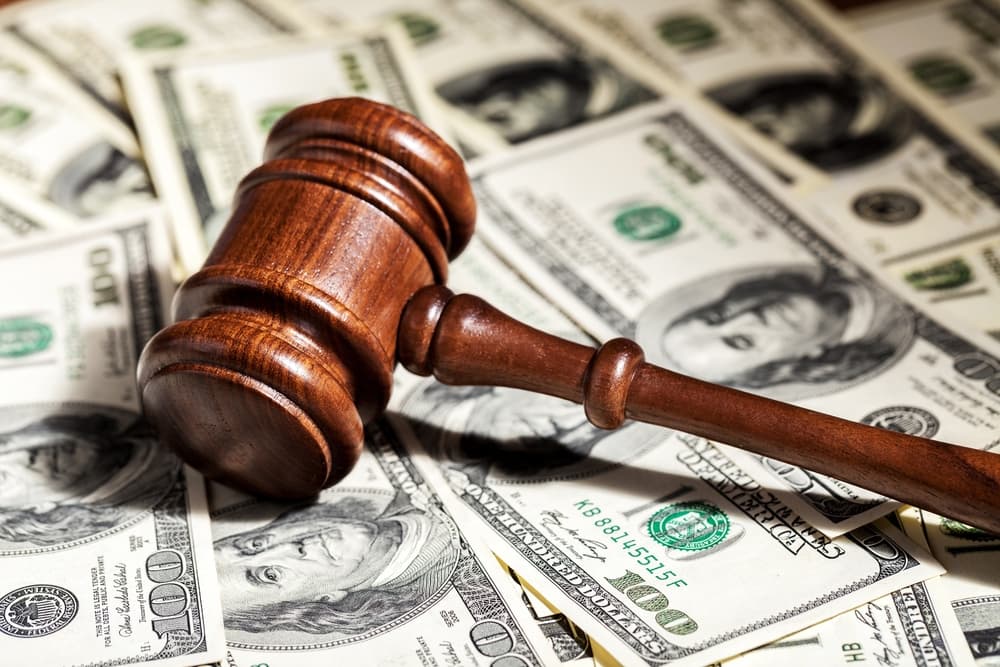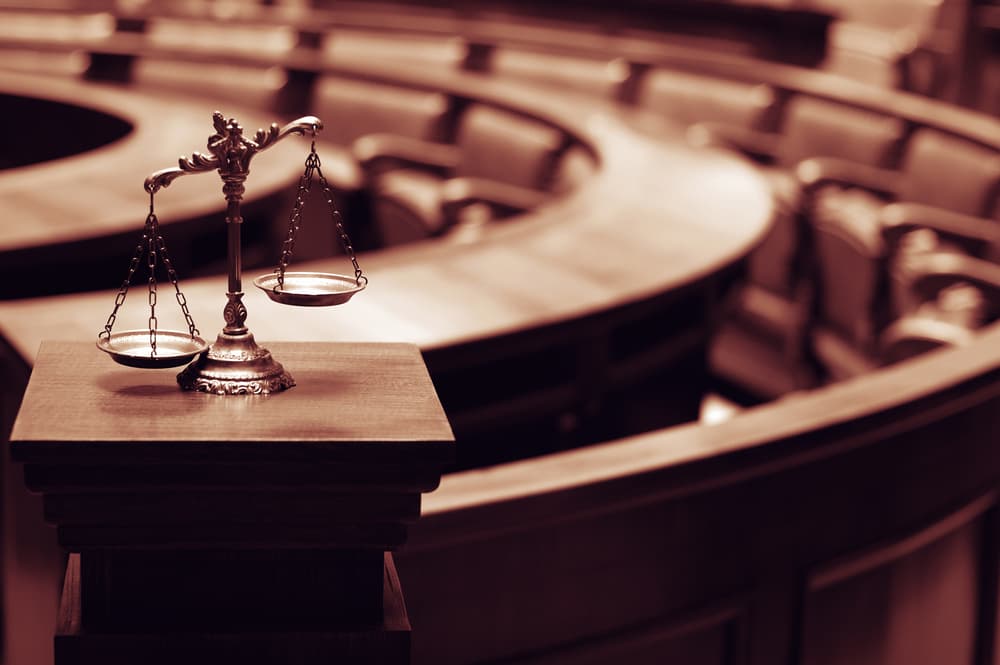Individuals who are involved in premises accidents and auto accidents caused by others frequently experience serious injuries and require ongoing medical treatment. They may also suffer intense pain, inconvenience, and emotional distress.
If you suffered injuries in an accident that resulted from someone else’s negligence, you may be eligible to recover various types of monetary compensation. The damages you can recover will usually depend on the accident type, the severity of your injuries, and other accident-related circumstances and will vary from case to case. However, having an experienced Edmonton personal injury lawyer in your corner from the onset increases your chances of maximizing your financial damages and becoming whole again after your negligence-related accident.
GET YOUR FREE CONSULTATION NOW!
Accidents that Can Lead to a Personal Injury Claim

Some of the most common accidents that can lead to a personal injury lawsuit include motor vehicle and premises accidents. A motor vehicle accident may involve a car or truck, bicycle, motorcycle, commercial vehicle, or pedestrian. In most situations, motor vehicle accidents happen when others drive recklessly and carelessly. Common motor vehicle accident causes include:
- Traffic law violations (speeding and failing to yield the right-of-way to other vehicles and pedestrians).
- Intoxicated driving.
- Distracted driving.
- Reckless driving or road rage.
Similarly, premises accidents happen when a premises owner or manager fails to maintain their premises or keep them safe for the benefit of property visitors. For example, a property owner aware of a spill or other defective condition might fail to warn about the spill or clean it up within a reasonable amount of time. At other times, property owners or managers may fail to ensure an adequate security presence in the area through security guards and cameras. If a third-party attack or other incident occurs on the premises, then the property owner may be fully or partially responsible.
If you or a person you love suffered injuries in one of these occurrences, you should immediately contact a personal injury lawyer about your potential legal options. Your lawyer can review your options with you and take the necessary steps to secure the compensation you deserve.
Common Injuries in Premises Accidents and Car Accidents
Car accidents and premises accidents can result in various injuries, ranging from minor to severe. Understanding the common types of injuries associated with these incidents is essential for both prevention and prompt medical care. Some of the most common injuries that car accident victims may suffer include:
- Whiplash – Whiplash is a common injury in car accidents, particularly rear-end collisions. It occurs when the force of a collision jerks an accident victim’s head forward and then backward, straining the neck’s muscles and ligaments.
- Soft Tissue Injuries – Soft tissue injuries, such as contusions, bruises, or sprains, are common in car accidents. The sudden deceleration or impact may cause the accident victim’s body to move abruptly, leading to strains and tears in muscles, tendons, and ligaments.
- Head Injuries – Traumatic head injuries, ranging from concussions to more severe traumatic brain injuries (TBIs), can result from the force of the collision. Even with airbags and seat belts, the accident victim’s head may still be vulnerable to injury.
- Fractures and Broken Bones – The force of a car accident can also lead to fractures and broken bones, especially in the accident victim’s upper and lower extremities. Collisions, rollovers, or high-speed impacts can cause significant force on the body and may cause a part of the body to strike something inside the vehicle.
- Cuts and Abrasions – Broken glass, debris, or contact with interior surfaces can cause cuts and abrasions. Injuries may range from minor scrapes to more severe lacerations requiring medical attention.
Common injuries that individuals may suffer from a premises accident include:
- Slip and Fall Injuries – Premises accidents often involve slip and fall injuries. Wet or uneven surfaces, inadequate lighting, or obstacles in walkways can lead to slips, trips, and falls, resulting in fractures, sprains, or severe head injuries.
- Structural Hazards – Structural hazards, such as unstable staircases, loose railings, or falling objects, can result in injuries ranging from minor bruises to more severe fractures or head injuries.
- Inadequate Security Injuries – Injuries due to inadequate security measures on-premises can include assaults, robberies, or other criminal activities. Victims may suffer physical injuries as a result of these incidents.
- Elevator and Escalator Accidents – Malfunctions or inadequate maintenance of elevators and escalators can lead to accidents, causing injuries like fractures, cuts, or entrapment-related injuries.
- Faulty Equipment or Maintenance Injuries – Poorly maintained premises, including faulty equipment or neglected repairs, can lead to accidents, resulting in injuries such as cuts, bruises, or fractures.
If you suffered any of these injuries in a recent car accident or premises accident, a knowledgeable personal injury lawyer near you can help. Your lawyer can begin assembling a claim on your behalf and gathering the necessary documents while you focus on getting the medical attention you need for your injuries.
Proving a Personal Injury Claim or Lawsuit Successfully
Legally proving a personal injury case involves presenting evidence that establishes the responsible party’s liability and demonstrates the extent of the damages that the accident victim suffered. The key elements and steps involved in proving a personal injury case include all of the following:
- Establishing a Legal Duty of Care – The first step in proving a personal injury case is establishing that the at-fault individual or entity owed the accident victim a legal duty of care. This duty varies based on the circumstances but generally implies a legal obligation to act reasonably and prevent harm.
- Demonstrating Breach of the Legal Duty of Care – Once the accident victim establishes that a legal duty of care existed, the next step is demonstrating that the at-fault party breached their legal duty. This step shows that the at-fault party’s actions or inactions fell below the standard of care expected in similar situations.
- Causation – Causation establishes a direct link between the at-fault party’s breach of duty and the injuries that the accident victim suffered. The accident victim must establish that the at-fault party’s actions were a substantial factor in causing the injuries.
- Proving Negligence – Many personal injury cases are based upon the legal concept of negligence. To prove negligence, the accident victim must demonstrate the existence of duty, breach of duty, causation, and resulting damages.
An experienced personal injury lawyer can satisfy these legal elements of proof by undertaking all of the following in your case:
- Collecting and Presenting Evidence – Evidence is crucial in proving a personal injury case. It may include testimony from eyewitnesses, videos and photographs, reports and testimony from experts (including medical experts), and medical treatment records.
- Documenting Damages – To recover monetary compensation, the accident victim must demonstrate the damages they suffered. These damages may include compensation for lost earnings, loss of earning capacity, and pain and suffering.
Personal injury cases are also subject to a statute of limitations that imposes deadlines for filing lawsuits. In general, accident victims must file a personal injury lawsuit within two years of their accident date. Otherwise, they risk a potential dismissal of their personal injury case.
Retaining an experienced personal injury lawyer is instrumental in navigating these legal complexities. An experienced personal injury lawyer in your area can assess the potential merits of your case, gather evidence, negotiate with insurance companies, and, if necessary, represent you in court.
What Happens During a Personal Injury Jury Trial?

If the parties to a personal injury case cannot reach a settlement, the case will likely proceed to trial. During trial, the parties present evidence, witnesses testify, and lawyers make legal arguments. A judge or jury then determines liability and assesses damages in the case.
During a personal injury jury trial, the legal process unfolds in a structured manner. In a personal injury trial, the plaintiff is the injured accident victim, while the defendant is the at-fault individual or entity.
The proceedings commence with jury selection, where both the plaintiff’s and defendant’s lawyers question potential jurors to ensure impartiality. Once the jury is selected, the trial moves to opening statements, where each side outlines its case.
Following the opening statements, the plaintiff presents their evidence, which may include medical records, expert testimonies, and other relevant documentation. The defendant’s legal team then has the opportunity to cross-examine witnesses and challenge the presented evidence. This back-and-forth continues with both parties presenting their arguments and witnesses.
The heart of the trial lies in the examination of evidence. This involves witness testimonies, documents, and any demonstrative exhibits. Expert witnesses may provide insights into the extent of the accident victim’s injuries, the effects on the accident victim’s life, and the question of liability.
Closing arguments mark the conclusion of the trial’s evidentiary phase. Lawyers for both sides summarize their cases, highlighting key points and persuading the jury to support their respective positions. The judge then provides instructions to the jury on applicable laws and standards.
Finally, the jury deliberates to reach a verdict. Their decision considers the evidence presented and determines whether the defendant is liable for the plaintiff’s injuries. If a court establishes liability, the jury assesses damages, including compensation for lost income, pain and suffering, and other relevant losses.
While this overview provides a general understanding, the specific details can vary, and individuals involved in a personal injury case must consult with legal professionals for advice tailored to their situation.
Recovering financial compensation in a personal injury lawsuit is a detailed and often lengthy process. A skilled personal injury lawyer in your area can navigate the complexities of the legal system, present a compelling case on your behalf, and secure fair monetary compensation for your accident-related losses.
What are the Specific Types of Recoverable Monetary Damages in a Personal Injury Claim or Lawsuit?
Recoverable monetary damages in a personal injury case compensate the injured party for losses incurred due to the negligent actions of another. These damages aim to restore the victim to a position as close as possible to their state before the injury occurred. Several types of monetary damages are recoverable in a personal injury claim or lawsuit, depending on the nature and extent of the harm the accident victim suffered. Those monetary damages include financial compensation for all of the following:
- Lost Wages and Earning Capacity – If the injury causes the accident victim to miss work, they may be entitled to compensation for lost income. Additionally, if the injury affects their ability to earn a living in the future, damages may be recoverable for diminished earning capacity.
- Pain and Suffering – Non-economic damages, such as physical and emotional pain, mental anguish, and loss of enjoyment of life, fall under pain and suffering. Quantifying these damages can be challenging, as they involve subjective experiences.
- Property Damage – In cases where personal property sustains damage due to the negligence of another party, the cost of repairing or replacing that property may be recoverable.
- Punitive Damages – In certain situations where the at-fault party’s conduct is particularly egregious or reckless, punitive damages may be recoverable. These damages punish the wrongdoer and deter similar future behaviour by others.
- Loss of Consortium – This type of damage compensates the spouse or family members for the loss of companionship, support, and services resulting from the accident victim’s injury.
Understanding the specific types of damages applicable to a case is crucial. A knowledgeable personal injury lawyer can assess the damages relevant to your circumstances and build a comprehensive case for favourable monetary compensation.
Contact an Experienced Personal Injury Lawyer Today

If you suffered injuries in an accident that resulted from someone else’s negligence, you need to retain an experienced lawyer who can handle every step of your case from beginning to end. Your lawyer can answer your questions, file a personal injury claim with the insurance company, and pursue a fair settlement offer on your behalf. If that offer is not forthcoming from the insurance company, your lawyer can litigate your case in court.
Facing a possible lawsuit can be stressful, but you do not have to worry about navigating the process. Instead, seek a consultation with a personal injury lawyer as soon as possible.
